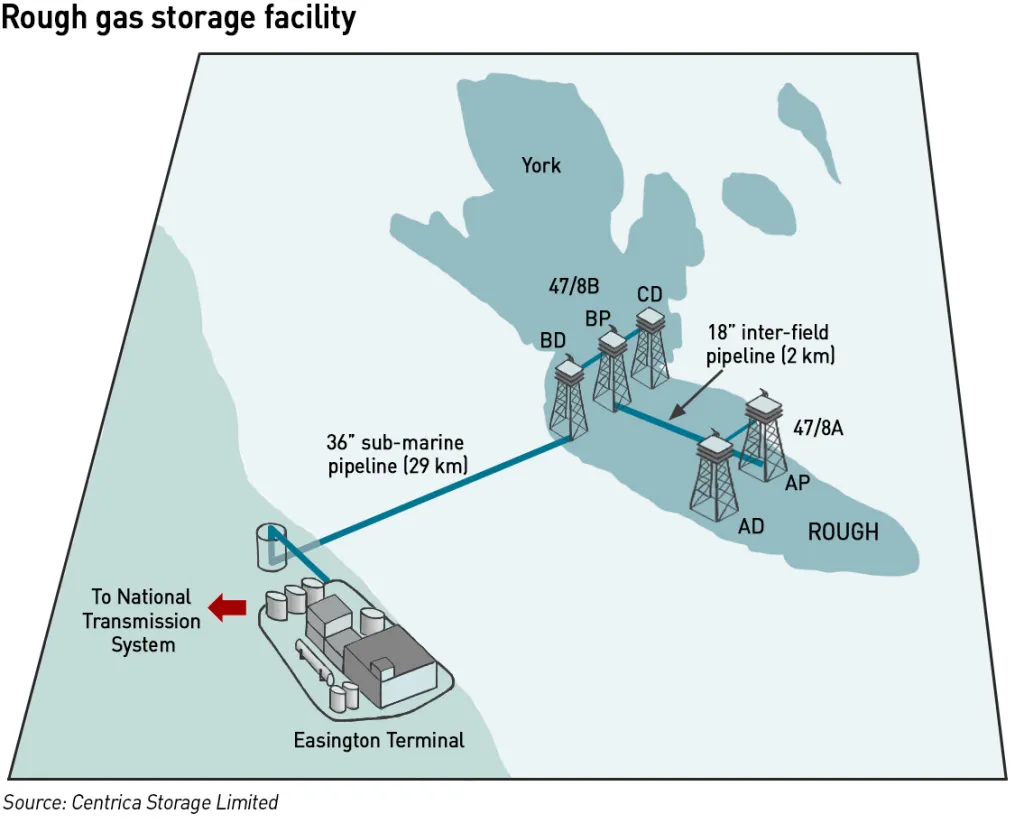Ministers are sharpening their long-term vision of creating a competitive UK market for carbon capture and storage (CCUS).
In a policy programme dubbed CCUS Vision, energy secretary Claire Coutinho wants increasing numbers of storage providers to compete in the embryonic technology, as they offer capacity and deals to industrial producers of CO2.
Launched today, the package of policies is part of emerging promotion of CO2 storage, backed over coming decades with £20 billion of public money.
Coutinho believes CCUS Vision can add £5 billion to the economy by mid-century. Her goal is a fully competitive storage market by 2035, featuring tradable CO2 products with sophisticated features.
In this decade alone, D-ESNZ believes CCUS will create 5,000 jobs in handling and trading the pollutant-cum-feedstock, at the same time cutting storage costs to market participants.
International storage trades are also sought, as ministers seek to make Britain a global hub for CO2 transactions, mimicking its established role as a global financial centre. Early exposure for UK firms in storage trading can, or so ministers believe, give them a first-mover advantage in pricing and settling global deals.
Besides geology and decades of relevant skills acquired in maritime engineering, Britain’s CCUS advantages include, say ministers, a wealth of exhausted gas field such as the re-purposed Rough storage facility under the North Sea, pictured. Our island status offers safe capacity for planet-warming CO2, currently estimated by officials at up to 78 billion tonnes.
The CCUS Vision raft of policies is the government’s latest step in delivering its ambitions in carbon storage. As part of that overall £20 billion investment, Whitehall has a goal of up to 30 million tonnes of CO2 sequestered every year by 2030.
Details of the CCUS Vision include:
- Moving to a competitive allocation process for CCUS projects after 2026, speeding up the sector’s growth
- Easing market access after 2024 of CO2 projects free of pipelines, using other forms of transport such as ship, road and rail
- Establishing a working group led by industry to identify and adopt solutions to reduce the cost of capturing CO2
Four regional carbon capture clusters are earmarked by ministers to revive Britain’s coastal industrial areas; HyNet in North West England, East Coast Cluster in Teesside and the Humber, Acorn in Scotland and Viking in the Humber.
“Thanks to the UK’s geology, skills and infrastructure, we are in a unique position to lead the way on carbon capture technologies“, energy secretary Coutinho said.
“That is why we’re making one of the biggest funding commitments in Europe on carbon capture that will cut emissions from our atmosphere, while unlocking investment, creating tens of thousands of jobs and growing the UK economy.”
From the Carbon Capture and Storage Association, CEO Ruth Herbert responded warmly. “We welcome the CCUS Vision published today, setting out a long-term strategy for the UK’s CCUS industry to be able to store over 50Mt a year by 2035 to support the decarbonisation of domestic industries and take advantage of export opportunities.
“It is great to see CO2 transport by ship, road and rail will be enabled from 2025 onwards, which will also support longer-term cross-border CO2 transport solutions.”
More details here.




